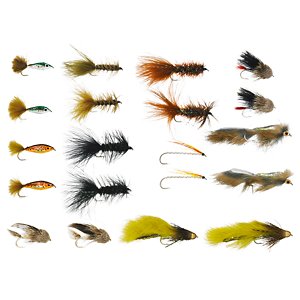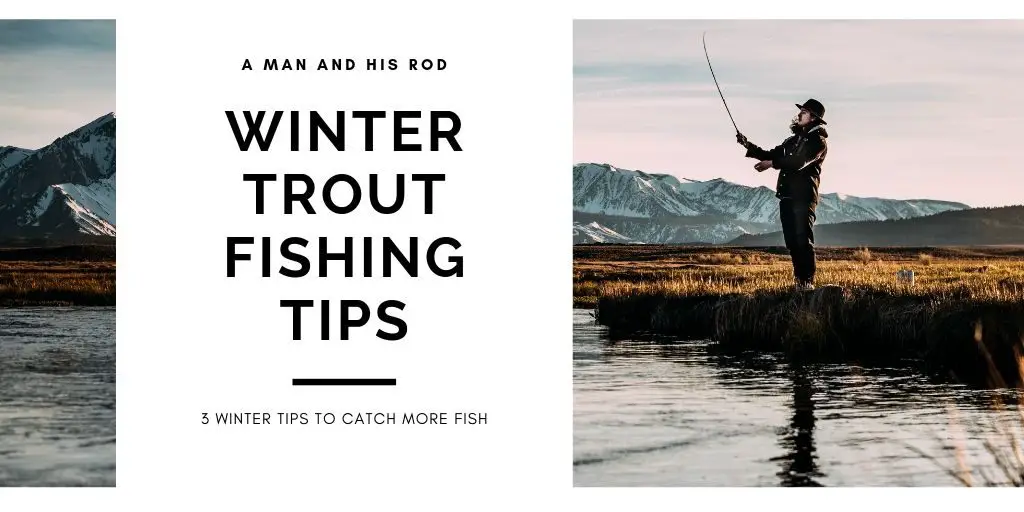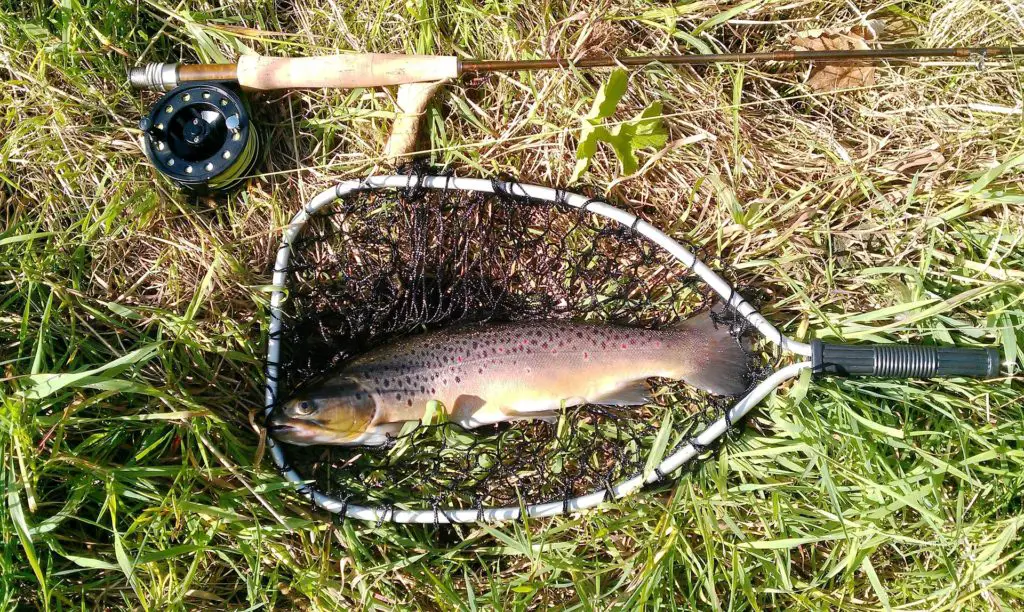When you think of fly fishing, your first thoughts are normally of large western rivers full of powerful brown trout, or cool mountain streams with bright brookies. Really any type of lake or pond can produce just as good fishing as any moving body of water. Stillwater fly fishing techniques are often overlooked on open water. There’s not nearly as much info out there about it as there is about it’s moving water counterpart. We’re here to change that and shine some light on the beauty of stillwater fly fishing.
If you’re anything like me and can’t afford a boat, then trout fishing lakes from the shore is your only option. Yeah, it’s kind of a bummer that you’re limited in where to throw your fly. However, it can lead to some great fishing and is a great way to learn how to fish non-moving water.
If you haven’t already taken some time to perfect your roll casting then now is the time to learn. Depending on where you’re located there’s a good chance you’ll be casting somewhere that doesn’t have any room for a back cast.
Stillwater Fishing Flies
From damsel flies to midges and everything in between, your fly along with presentation are the key to your success fly fishing stilleater. While selecting flies for rivers and streams may be more in your comfort zone have no fear. In this section were going to go over some solid choices to get you started.
Fly Fishing Streamers in Stillwater

Some of the best flies for lake fishing are streamers. These are already so much fun to throw and can bring in big fish on moving water as well as in lakes.
Stripping in a streamer past a piece of structure is a great first spot to try. A lot times bass or trout will hold on to these structures and use them for ambush points for prey.
Because you’re consistently casting and retrieving your fly, throwing streamers are great for beginners or people who get bored easily.
Make sure to wear some good hiking shoes when throwing streamers from the bank. Unless you find fish you won’t be spending too much time in one spot.
If you’re going to be throwing large streamers then you should be using a heavier rod. Typically, a 6-7wt will work best. However, you can get away with a 5wt if you’re throwing smaller streamers.
Sinking line will get you a little deeper in the water column, which will help you if the water temp is warm and the fish are deeper.
Stillwater Nymphing Techniques

Next up is nymphing, an extremely effective stillwater fly fishing technique that can land you a lot of fish but can also be tedious. Until you figure out where the fish are, you’re going to be sitting there watching a bobber float across the water for a while. It’s arguably the most effective way to catch stillwater fish though.
Take a dip net and try to figure out exactly what the fish are keying on. Once you’ve got your fly picked out, it’s time to solve the puzzle of where they’re located in the water column. See if you cant locate the thermocline.
You can do this by tying on 2-3 rig set up with each fly about 12-16 inches away from each other. Double check your local laws before doing this because some areas do not allow multi rig set ups.
You don’t need anything near as heavy for nymphing. A 4-5wt rod will work perfectly for this. You’ll be using pretty long leader so a crucial piece of gear to have is a slip float. The slip float slides up the leader and out of the way when reeling in a fish. This is perfect for when you’ve hooked a fish that is on a 10 foot or longer leader.
Fly Fishing Dry Flies

Now we’re on to what got us into the sport of fly fishing, and that’s throwing dry flies to rising fish. When you spot an area where fish are rising don’t rush into it and start throwing your fly all over the place.
Take a deep breath, sit back, and watch the fish. Observe what it is they are taking and how they are taking it. Is there a pattern to when they rise up or does it seem to be random?
Once you’ve keyed in on what they’re eating and what the rising pattern is, wait for the next rise and then cast as close to that ripple as possible. Let it sit in that spot for a minute or two before re casting.
Throwing dries and nymphs have a similar set up. 4-5wt rods work best, except you will want floating line attached to your reel, along with a 9’ leader and another 3-4’ of tippet attached to it.
If the surface of the water is calm then extend your leader a few extra feet. A great way to throw dries is to drop an emerger or a nymph off of your lead fly. This is a great tool that can be used to figure out if the fish are keying in on subsurface or looking for dries.
Conclusion – Stillwater Fly Fishing Techniques to Catch More Fish
Don’t be afraid to get out on stillwater. Bass are great fun on a fly rod and trout can grow to be absolute brutes in big, deep water. Remember to practice your roll casting and don’t forget the slip bobbers. Give some local ponds and lakes a shot, it will certainly be a day you won’t forget.
These stillwater fly fishing techniques are fundamental to having success out there. Don’t get discouraged, we have all been there. The only thing I can guarantee in fishing is that if you don’t get out there and fish, you wont catch anything.
Want to learn more about stilwater fly fishing? Click this link for 8 tips for fly fishing stillwater.
If you liked this article feel free to hit one of the social media icons over there on the left. You can also subscribe at the top of this page to receive updates when new posts are published.


